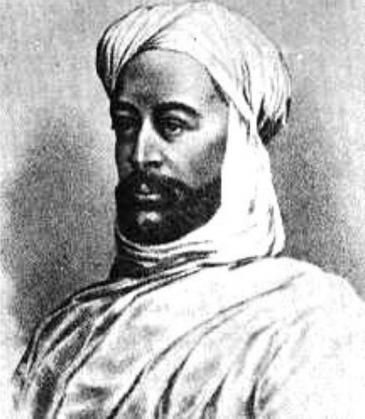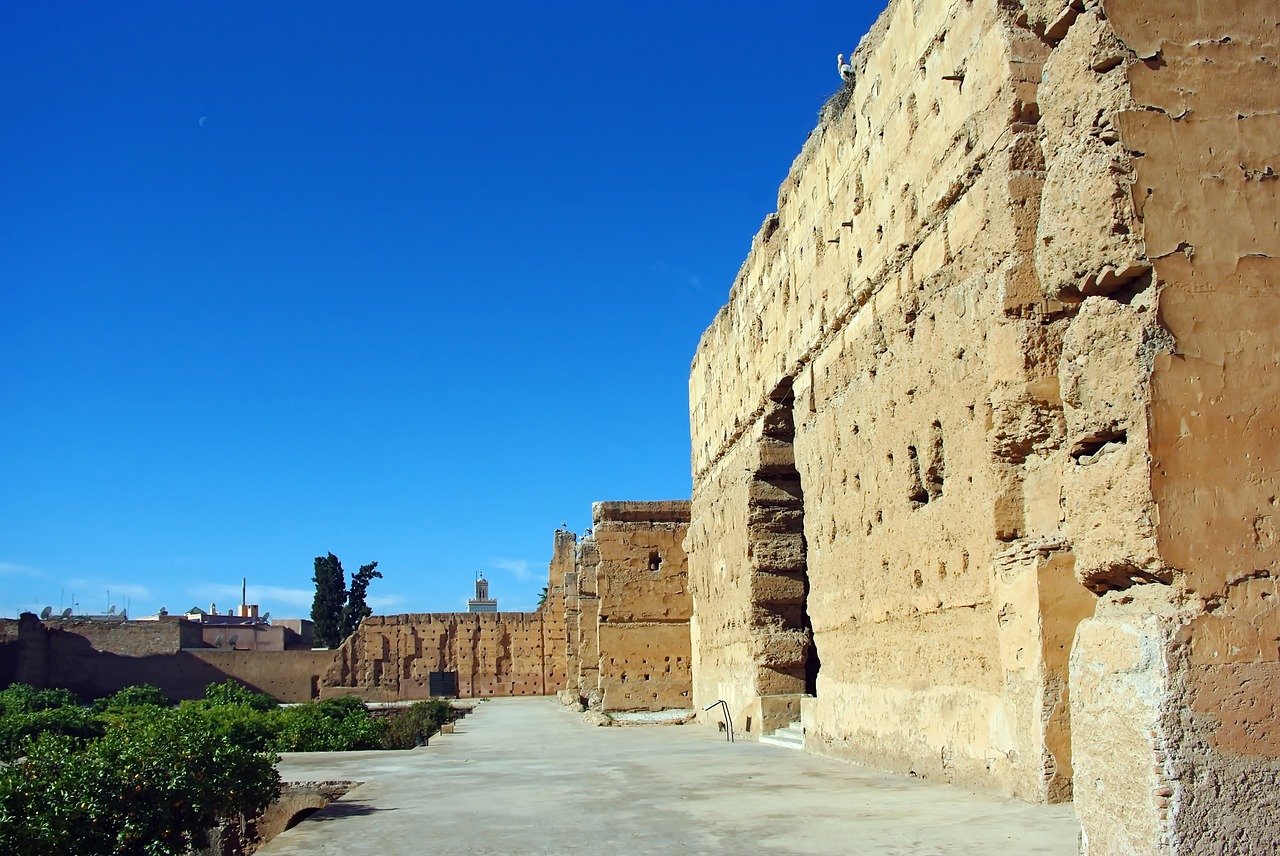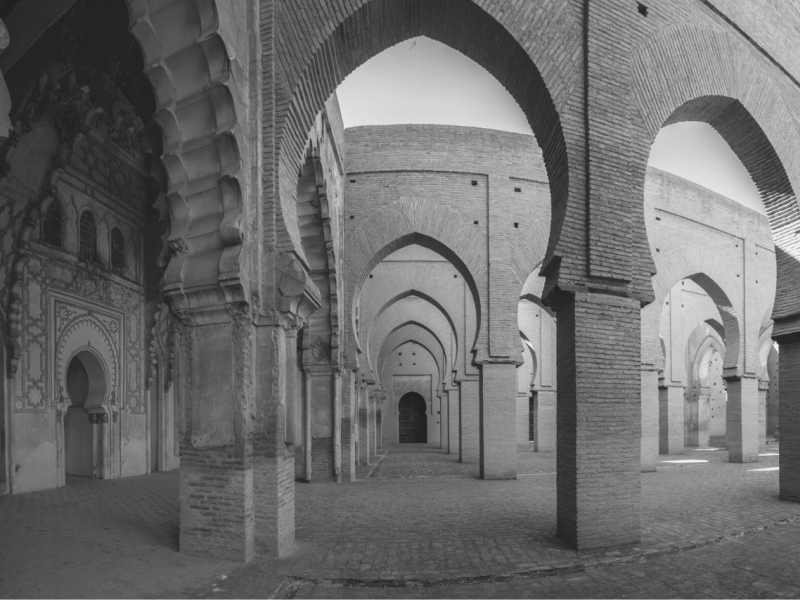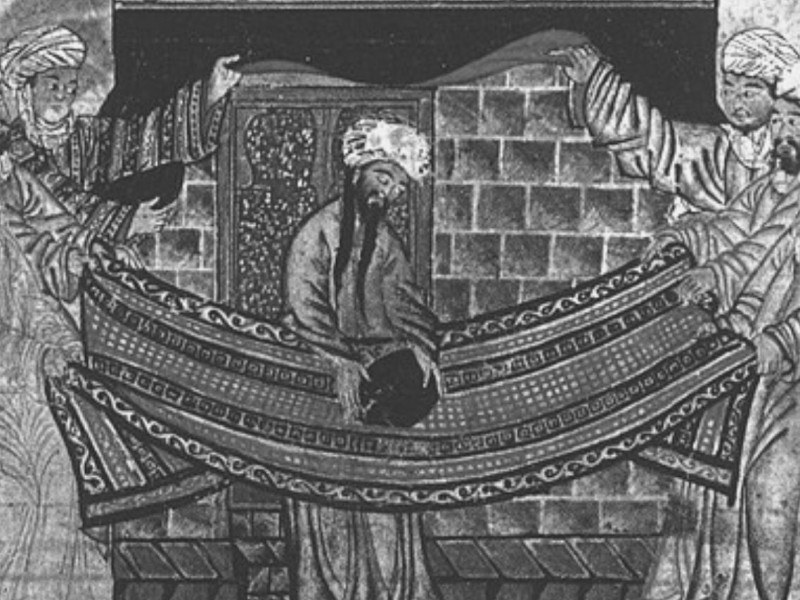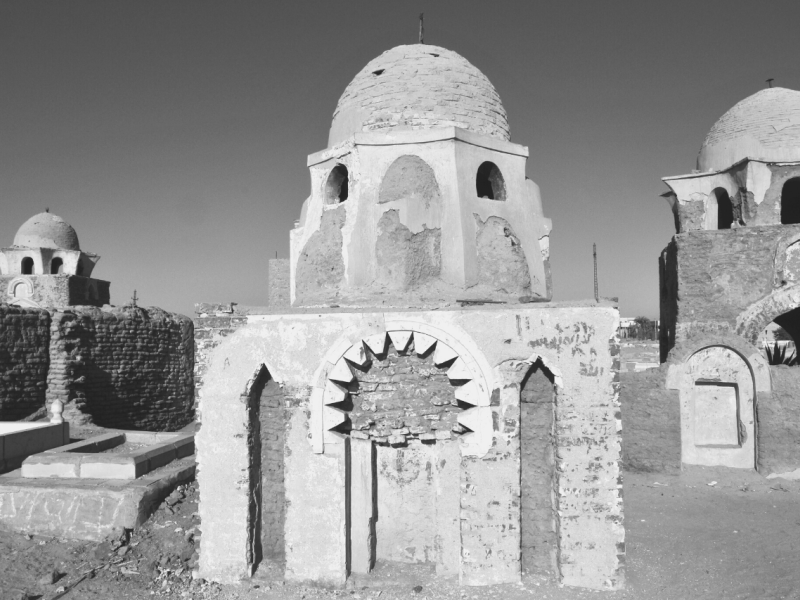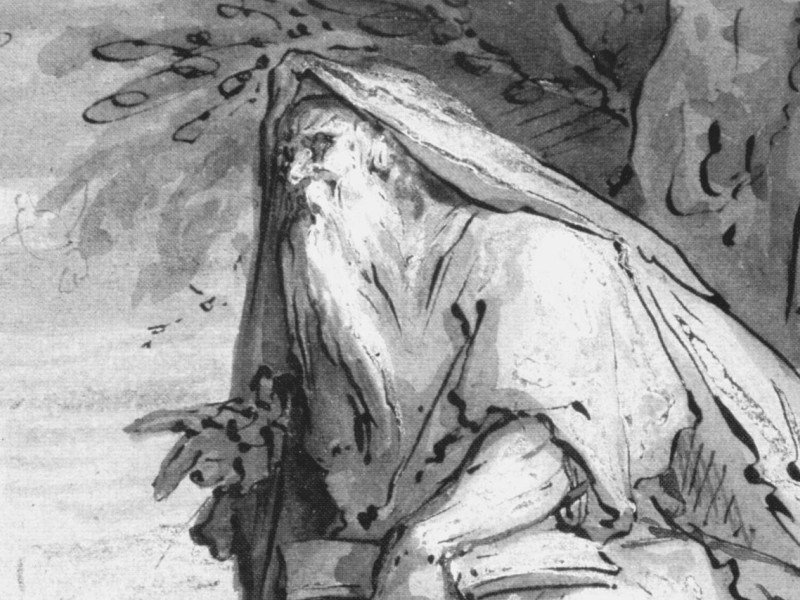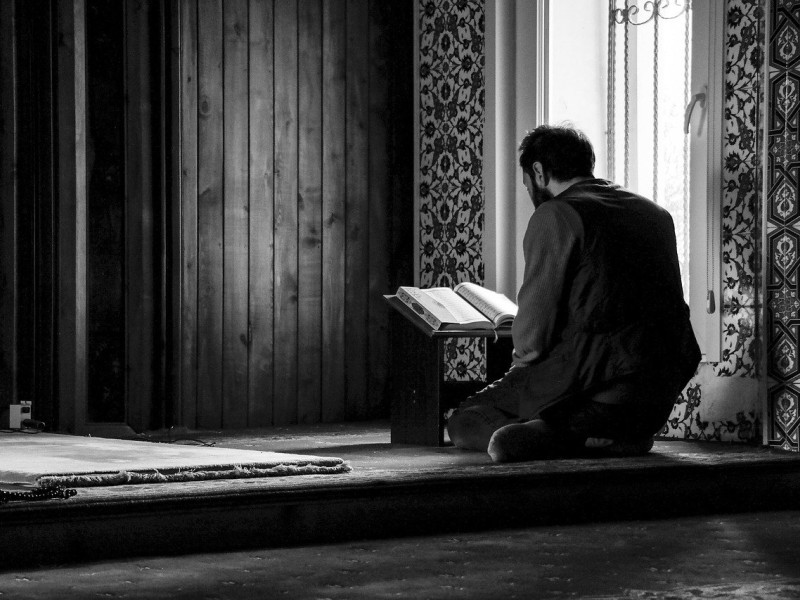Ibn Tumart: Charismatic Religious Leader
Ibn Tumart was a North African Muslim leader who founded the Almohad movement in North Africa. Tumart led a Berber tribesmen’s organization to end Almoravid rule in North Africa and instated a strict Muslim caliphate.
Though he was unsuccessful in leading the armed struggle during his lifetime, he created the Almohad movement and is a vital part of what it would become after his death. This article will explore the eventful life of Ibn Tumart.
Who was Ibn Tumart? A Descendant of Idriss I
Muhammad Ibn Tumart was born around 1080 in a Masmuda Berber tribe of the Atlas Mountains in the southern Sous region of modern-day Morocco. His name means “son of the Earth” in the Berber language. He was the son of the village mosque’s lamplighter and would spend much of his childhood lighting lamps in mosques in the region. He was given the nickname “Asafu” as a child, which translates to “firebrand” or “lover of light.”
Ibn Tumart and his followers claimed that he was a descendant of Idriss I, the founder of the Idrisid dynasty in Northern Morocco and a descendant of the Prophet Mohammed’s grandson. Scholars have highly debated this, as the linkage hasn’t been proven, and it was common for aspiring Berber leaders to falsely proclaim a Sharif (noble) lineage to gain power.
Ibn Tumart is also called Muhammad ibn Abdallah or Muhammad ibn Tumart. Many scholars believe that “Tumart” was given to him as a nickname by his followers, which means “good fortune,” “delight,” or “happiness” in the Berber language. “Tumart” can also be used interchangeably with the word “Saad,” a common Arabic name for males that translates to “felicity,” “happiness,” “prosperity,” “success,” and “good luck.” Many Sufi Muslim saints held this name throughout the region.
During Tumart’s lifetime, Morocco was under the Almoravid Dynasty’s control, a Berber dynasty credited for spreading Islam through much of Western Africa. Tumart was heavily interested in religion during his youth and would leave home to study Islam around the region. In around 1106, he traveled to Qortoba, considered the most important center of Islamic studies in the region. While there, he became a disciple of Abu Bakr al-Turtushi, one of the most prominent Andalusian philosophers of the twelfth century.
After studying at a religious school in Baghdad, Tumart became more and more passionate about strict adherence to the teachings of Muhammed and the Qur’an. The Ash’ari school of Islam shaped his faith, and he possibly studied under Al-Ghazali, a prominent Islamic philosopher who championed Sufi Islam. It has been said that Tumart was present when Al-Ghazali heard his newest work, Ihya’ Ulum al-Din, was banned by the Almoravid government. Al-Ghazali reportedly turned to Tumart and implored him to help overthrow the Almoravid government, though scholars haven’t confirmed this encounter.
Building His Following
Around 1117 Tumart traveled across North Africa to preach in towns about the populations’ impurities. Tumart publicly shamed those he deemed impure in Islam’s eyes, such as wine sellers and women not wearing veils in public. Some of these instances of public shaming turned violent and caused unrest throughout the towns’ population. A large component of his preaching was against the Almoravid government that controlled the region, as he saw them as impure, heretical interpreters of Islam.
Tumart despised their use of the Maliki school of Sunni Islamic law, which he condemned as impure for not strictly adhering to Mohammed’s “Sunnah” and “Hadith” traditions. Tumart believed in strict Zahiri Islamic and heavily criticized the Almoravids for putting too much of the dynasty’s law in secular courts’ hands.
Tumart began these public preaching spectacles as soon as he left school in Baghdad and went on his pilgrimage to Mecca. Tumart was desperate to share his newfound education of Islam and was kicked out of the city for being a nuisance.
He then traveled to Cairo and Alexandria, eventually taking a ship to the Maghreb in Western Africa. During the Maghreb’s voyage, Tumart reportedly began throwing flasks of wine off the ship because Mohammed condemned it. He also shamed the sailors for not strictly adhering to strict daily Islamic prayer, with some stories saying that Tumart was thrown off the ship by the sailors and was rescued a few days later.
Tumart then continued his preaching throughout Northwest Africa. Tumart often stood near schools and mosques and preached waving a puritan staff, loudly shaming the city’s population for the mixing of different sexes, the unveiling of women in public, and wine production and music.
After being banished from the town of Bejaia in modern-day Algeria, he settled in the outskirts of the city and began creating a group of followers. While preaching there, he met two men who would become leading figures in his movement: Abd al-Mu’min, who would succeed him after his death, and al-Bashir, his top political and military strategist.
Tumart and his followers then moved into modern-day Morocco, which led to an incident in the town of Fez. Upon entering Fez, Tumart not only demanded to debate the theological scholars of the city but ended up assaulting the sister of Almoravid emir Ali ibn Yusuf for not wearing a veil in public.
After being banished from Fez, Tumart and his followers moved on to Marrakesh, the Almoravid capital, where he debated with the emir himself. Upon seeing the Almoravid leader, he reportedly declared, “Where is the emir? I see only women here!” a highly offensive statement that poked fun at the Almoravid tradition of noblemen wearing veils.
After the debate, Tumart’s religious beliefs were proclaimed to be blasphemy by the Almoravids, with many wanting Tumart put to death or prison. Instead, the emir decided to banish him from Marrakesh after a flogging of fourteen lashes.
Tumart then proceeded to the nearby town of Aghmat, where he caused further unrest through his public sermons and condemnations. The ulama of Aghmat asked the emir to arrest Tumart, but he escaped arrest with the help of a Masmuda chieftain.
The Almohads in the Atlas Mountains
After being banished from Marrakesh and the other cities of the region, Tumart traveled back with his followers to his birthplace in the Atlas Mountains, where he further built his loyal following in the Sous Valley.
Tumart preached especially on the concept of “tawhid,” which centered around Islam’s strict monotheism. He named his followers the Almohads or al-Muwaḥḥidūn, which translates to “those who affirm the unity of God.”
While living in the Atlas Mountains during this period, Tumart lived mostly as a hermit, leaving his cave to preach to his growing crowd of followers. Many speculate that this was inspired by the Prophet Mohammed’s withdraw from society into the cave of Hira, where he meditated and received his first revelation.
Tumart proclaimed himself to be the Mahdi, an Islamic leader who would restore righteousness and a perfected Islamic society to Earth. Tumart was renowned for his charisma, extensive knowledge of Islam, and gift for public speaking. Many locals joined the movement believing that he was a holy man with supernatural powers. Tumart increasingly began planning towards taking a more militant approach within his movement, as he preached overthrowing the Almoravid government and instating strict Islamic law.
In 1122 Abu Hafs Umar ibn Yahya al-Hintati, or Umar Hintati, a prominent Hintata chieftain, visited Tumart and offered to help shelter him from the Almoravid government. Tumart soon abandoned his cave dwelling and accepted the offer, traveling to the High Atlas Mountains, where he began preaching to the tribes of the area with great success. The cave’s path to the High Atlas Mountains and the cave itself would be considered sacred by the Almohads, as many would consider the route a holy pilgrimage.
After gaining the following of the Ganfisa, Gadmiwa, Hintata, Haskura, and Hazraja highland Masmuda tribes, Tumart decided to build the fortified Almohad headquarters in the High Atlas Mountains in the village of Tin Mel.
Throughout the next eight years, a guerilla war ensued between Tumart’s Almohad guerilla fighters and Almoravid troops throughout the High Atlas area south of Marrakesh. This guerilla warfare disrupted important Almoravid trade routes and threatened their control of the region.
Due to the Atlas Mountains’ defensive advantages, the Almoravids couldn’t completely rid the region of the Almohad fighters. Instead of destroying the movement, it concentrated its military operations in keeping Tumart and his troops confined to the High Atlas Mountains.
Almohad Society
Tumart’s Berbers group was a loose society of different tribes that often didn’t have an in-depth understanding of Islam. Tumart began teaching the Qur’an and Islamic teachings, transforming his diverse Berber population into a unified Muslim society with an egalitarian system of governance. He taught both in Berber and Arabic and encouraged the memorization of the Qur’an to his followers.
Though Tumart did show examples of brutality with his teachings—killing dissenting tribal elders or the bloody purge his chief strategist carried out in 1129—Tumart sought to build a relatively equal society: one that is based on strict adherence to the Qur’an and the teachings of Muhammed.
Failed Attack on Marrakesh
Tumart and his troops finally launched a campaign against Marrakesh in 1130. The Almohads quickly defeated a column of Almoravid troops near Aghmat and chased them back to Marrakesh. Marrakesh’s city was taken by surprise by the arrival of the Almohads as there were very few defensive preparations in place, and there was a mass scramble among the city’s population to get inside the city’s walls.
The Almohads would lay siege on the city for forty days but were eventually decimated by Almoravid reinforcements. The Battle of al-Buhayra took place just east of the city and resulted in much of the Almohad leadership being killed, including General al-Bashir. A heavy rainfall towards the end of the Battle let the surviving Almohad troops retreat to the Atlas Mountains.
Tumart would die of illness soon after the disastrous defeat in August 1130.
The Almohads after Tumart
Abd al-Mu’min would be Tumart’s successor and kept his death a secret for three years until he could fully consolidate his power of the Almohads. Abd al-Mu’min would fully realize many of the goals of Tumart, as he would successfully take the city of Marrakesh 17 years after the disastrous defeat of the Battle of al-Buhayra.
Abd al-Mu’min would replace Almoravid rule in North Africa with Almohad rule, which spanned from southern modern-day Spain to Libya at its height. While initially instating many of the strict puritan Islamic beliefs of Tumart during the initial period of the Almohad dynasty, the Almohads gradually relaxed their religious laws. They were eventually entirely driven from power in the region in 1269.
Conclusion
We’ve covered the eventful life of Almohad leader Ibn Tumart.
Let’s go over the main events of Tumart’s life and legacy.
Tumart’s ideology was rooted in strict adherence to Islam and the teachings of the Prophet Mohammed.
Tumart grew up in a region controlled by the Almoravid dynasty, which he considered heretical and too lenient with Islam’s practice.
Tumart would build up a following that traveled with him throughout North African cities, before finally being banished to the Atlas Mountains.
Tumart would grow the Almohad movement in the High Atlas Mountains, bringing many of the region’s Berber tribesmen into the movement.
His forces would attack Marrakesh in 1130 but suffer a disastrous defeat at the Battle of al- Buhayra. He would die from illness soon after the Battle.
Though he would never live to see the Almoravid government’s overthrow, Tumart laid the foundation for the Almohad dynasty that would come after his lifetime.
